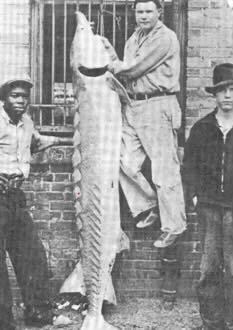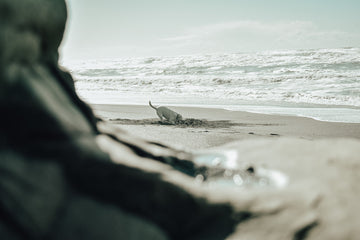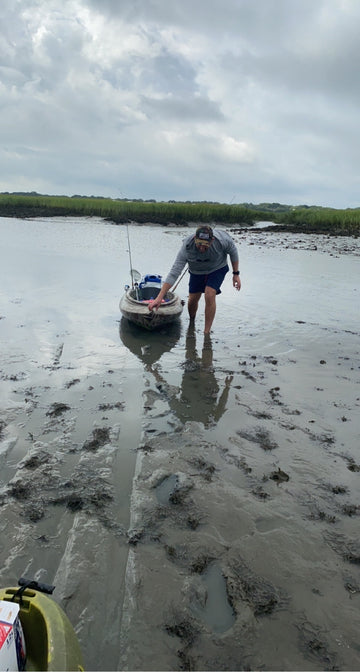
Atlantic Sturgeon: The Living Fossil
The Current State Of Atlantic Sturgeon
Have you ever seen a living fossil? That term gets thrown around a lot but it is an accurate description for the Atlantic Sturgeon. The Atlantic Sturgeon is a critically endangered species. It once spanned from Canada to Florida. Since 2017, the South Carolina DNR has conducted population studies on the Atlantic Sturgeon. The South Carolina Department of Natural Resources (SCDNR) observed 1,823 to 1,944 adult or sub-adult Atlantic Sturgeon on the Pee Dee River during a three-day scan. This information comes from the "Atlantic Sturgeon Population Estimates" report. However, there is a discrepancy. The river also has a population of Shortnose Sturgeon. This is a relatively large number compared to other locations. However, it is nothing compared to the “Black Gold Rush” of the late 1800s. Which consisted of cultivating and harvesting them for their roe, or caviar as many are familiar with
The History of The Atlantic Sturgeon

Researchers have discovered that the ancestors of today's Sturgeon have been around since the early Jurassic period, 175 million years ago. If you remember the saying, “Dear King Philip Came Over For Good Soup” you paid attention to in high school biology. If you were daydreaming in high school and do not recall. This is a mnemonic phrase for the biology taxonomic classification system. The phrase represents the order of taxonomic levels. They are: Domain, Kingdom, Phylum, Class, Order, Family, Genus, Species. It is important to know this moving forward as the Sturgeon is not like other fish. The sturgeon class is Actinopterygii or boney fish. This class of bony fish makes up roughly 50% of living vertebrates.
The taxonomic breakdown's order is where the Sturgeon becomes interesting. The Sturgeon is in the order of Acipenseriformes or basal ray-finned fish. This order includes two varieties of extinct species. It also includes the vulnerable American Paddle Fish and the endangered Atlantic Sturgeon. The Sturgeon has an axial skeleton. It is only partially solid, with most bones replaced with cartilage.
The most interesting thing about the Atlantic Sturgeon is that it is an anadromous fish. This means that the Atlantic sturgeon breeds and spawns in freshwater estuaries, while It spends most of its adult life in the ocean.
The Atlantic Sturgeon hatches in freshwater rivers from Maine to Florida. Then they head out to sea and return to freshwater to spawn when they reach adulthood. The Atlantic sturgeon can reach a substantial size of up to 800 pounds and over 15 feet in length over 60 years. The Atlantic Sturgeon life cycle explains why they release many eggs when they spawn. Sturgeon reaches maturity so late in life. The most valuable resource of the sturgeon is its caviar. This is one of humanity's most decadent food groups.
The Sturgeon is known as a living fossil since it has not changed much since the Jurassic period. To the right, you see an image of the Atlantic Sturgeon scutes. The scutes are what make up the bony plates that line the body of the sturgeon. This forms an armored layer on the surface of the body.

The Sturgeon is known as a living fossil since it has not changed much since the Jurassic period. To the right, you see an image of the Atlantic Sturgeon scutes. The scutes are what make up the bony plates that line the body of the sturgeon. This forms an armored layer on the surface of the body.
What Caused The Crash of The Atlantic Sturgeon?
The Native Americans knew that the Atlantic Sturgeon was a great source of food. Native Americans passed this knowledge to European colonists. This knowledge was abused during the late 1800s. At this time America became the world's number one exporter of caviar. This is because the Europeans were able to purchase it for very little. They then marketed it as Russian caviar and sold it for a huge margin. As the law of supply and demand goes, the supply decreases over time. Consequently, the price of caviar began to rise significantly. This is when the Americans began to severely deplete the levels of Atlantic Sturgeon.
How Can We Help The Atlantic Sturgeon?
How can we Help the Atlantic Sturgeon?
It is important to remember stories like these when thinking about how we want to leave the planet for future generations. For reasons like this and so many others it is important to support your local DNR. When you purchase products from Toadfish we get to support amazing causes and groups that not only help Oyster restoration but also support endangered and vulnerable species.





romani cimcoz